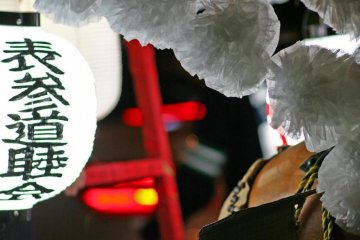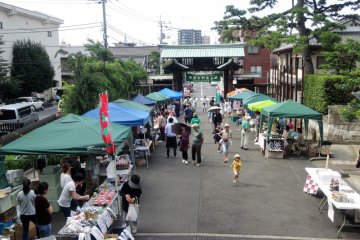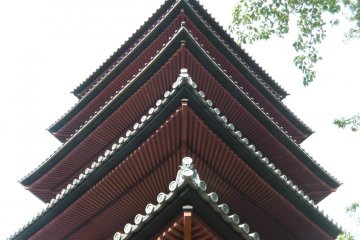The founding of Ikegami Honmonji in 1276 by the Buddhist monk and scholar Nichiren led to the growth of a small town in the surrounding environs to support the visitors of the temple. As Honmonji grew in popularity as a pilgrimage destination, the shops at the base of the complex began catering to travelers with special food and accommodations.
Today, while the temple doesn’t attract nearly the same crowds as in the past, a vestige of the old atmosphere remains in the neighborhood. A few shops, still sporting wooden fronts and tile roofs, sell products ranging from various kinds of mochi (traditional treats made from pounded rice) to senbei (rice crackers), a selection of which are emblazoned with images of Honmonji itself. Closer to the 96 stairs that lead up to the temple precincts, a handful of subtemples let visitors peek into their carefully manicured gardens.
Around the western side of the temple, visitors will also find the Ikegami Plum Garden. Every year in mid-February, the garden’s 370 plum trees in nearly three dozen varieties herald the arrival of spring with a host of pink, purple and white-colored blossoms.









